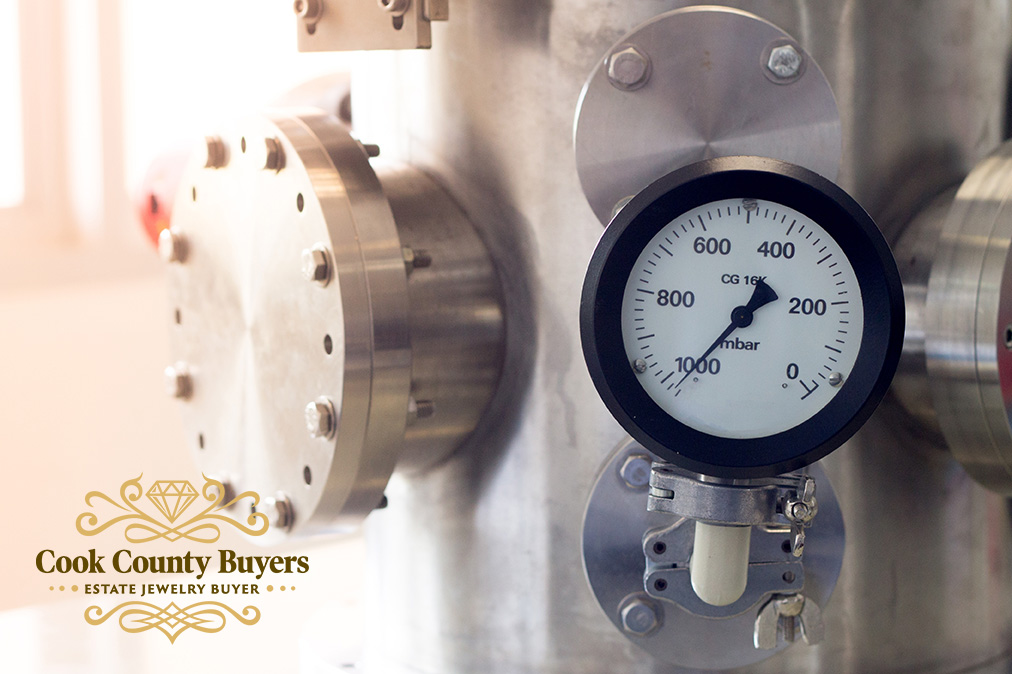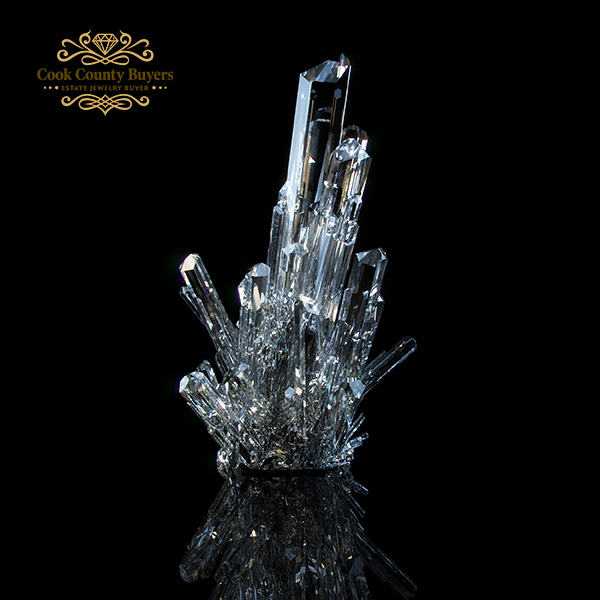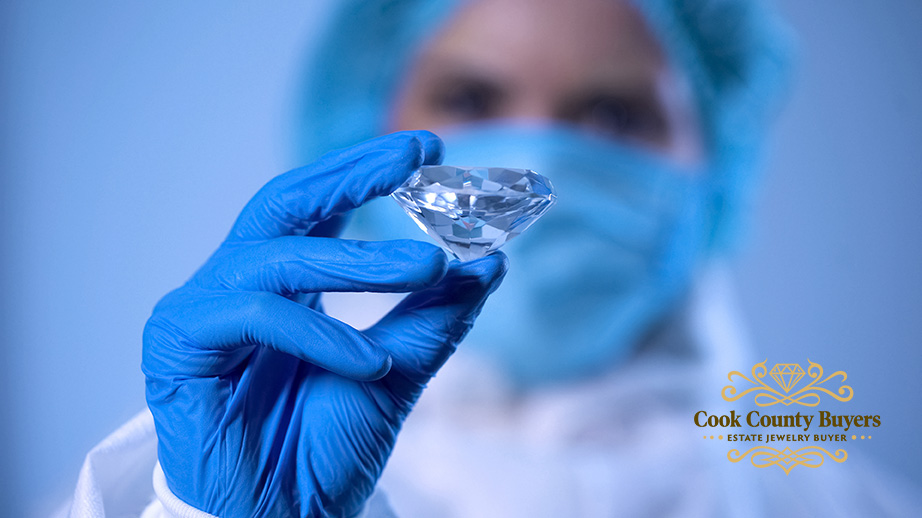By now, you may have heard about lab-grown diamonds. If not, I’ve included a short article written by a colleague of mine, that sums it up very nicely! You can find the link at the end of this article.
As a diamond buyer, the flood of them into the market over the last few years has created a need for greater due diligence. Most notably is the need for expensive testing equipment to detect lab-grown diamonds from natural diamonds. Cook County Buyers just purchased a state-of-the-art Yehuda Sherlock Holmes 3.0 tester for nearly $7000. With Sherlock, I will stay ahead of unscrupulous sellers looking to pass off lab-grown diamonds as natural.
Why is it so important to detect the difference, you may ask?
Quite simply, a lab-grown diamond (at the time of writing this post) is worth roughly 90% less than the natural earth-mined version of the same stone!
Most estate jewelry buyers are not even willing to purchase used lab-grown diamonds at any price. Considering how quickly these stones have dropped in value, there is an excellent chance they will become nearly worthless in the coming years. The same thing happened to moissanite (imitation diamonds that used to be rather pricey).
However, Lab-grown diamonds do have a place in the jewelry industry. Most major jewelry stores are now offering them, and some are shifting almost entirely to lab vs. natural. For a buyer only concerned with price, they provide an opportunity to buy gorgeous (and yes, real diamond) jewelry for a fraction of the natural cost.
Do Lab-grown diamonds have vale?
But it is imperative to make sure you understand that the product you are buying today will almost certainly have little to no resale value in the future. In comparison, natural diamonds will always maintain some of their value. On average, Cook County Buyers pays between ten and fifty percent of your (earth-mined) diamond jewelry purchase price. In contrast, lab-grown diamond jewelry is likely to return between zero and five percent of the purchase price.
In summary, lab-grown diamonds are the same as natural diamonds in their chemical composition. However, natural diamonds maintain their resale value due to the rarity of their origin from deep within the earth. Lab-grown diamond companies have been ramping up supply to the market, thus bringing retail prices down by over 50% and will continue to drop in coming years. If you want your diamonds to maintain at least some resale value, and you appreciate the rarity. Then I would suggest the multi-million-year-old product of the earth, stick to the real deal! Eventually, I expect them to be worthless; you’ve been warned!




